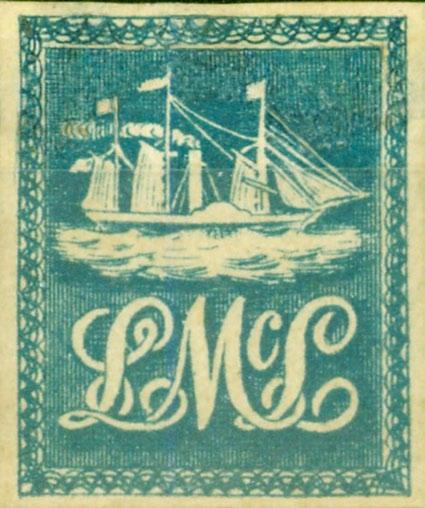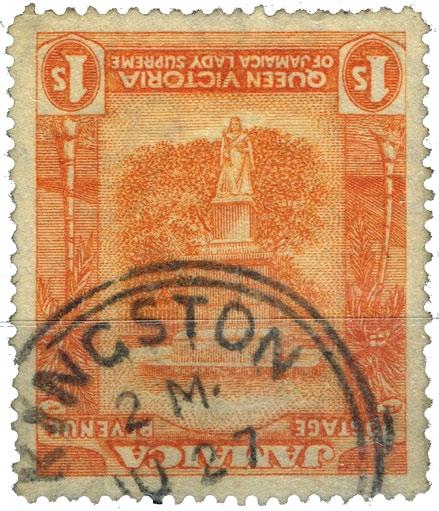
4 minute read
The Caribbean's rarest stamps


Advertisement
The Caribbean’s rarest stamps
Handwritten letters from penpals in lands far away may have been a simple childhood pleasure, depending on your age. Curiosity about the postal service and even a fascination with postage stamps might have ensued, too. Stamp collecting is a fun and family-friendly activity with opportunities to learn history, explore the world, and maybe even earn income. Tremendously serious philatelists generally focus on a particular country or era.
Which stamps do Caribbean philatelists consider the biggest treasures? As we mark World Post Day on 9 October, here’s a glimpse at three rare and coveted examples.
Trinidad’s Lady McLeod (1847)
According to the Smithsonian National Postal Museum, the Lady McLeod is the first adhesive postage stamp relating to “post by sea” — although privately issued. Comparatively, the Philatelic Society of Trinidad and Tobago claims it as the first stamp to be issued by a British colony. This renowned stamp was introduced to pre-pay for mail carried by the Lady McLeod steamer — named for the wife of Governor Sir Henry McLeod — which plied between the towns of Port of Spain and San Fernando, carrying people and cargo. A $1 monthly subscription fee payable quarterly and in advance was charged for letters, money, and small parcels, while non-subscribers were charged ten cents per letter. Today, eightyfive of these elegantly designed stamps are known to survive. One was sold last year for £7,000. Genuinely unused or mint copies are of the utmost rarity.
Jamaica one-shilling inverted-frame err or (1919-1921)
A printer’s error created Jamaica’s rarest stamp, in which part of the design was rendered upside-down. It’s assumed that a sheet of sixty stamps was printed, with half of the sheet being delivered to a post office in Manchioneal, a small village in Portland parish, and the other half possibly sold in Kingston. Fewer than twenty were unused and only five exist in used condition. Mint examples sell for over £30,000.
British Guiana’s one-cent “Black on Magenta” (1856)
The stamp most notorious for creating a media buzz each time it’s sold or displayed is the exceedingly rare “Black on Magenta” from British Guiana, of which a single example is known to survive. Considered the most valuable stamp in the world, it was sold to upscale shoe designer Stuart Weitzman in 2014 for approximately US$9.5 million.
In early 1856, Georgetown postmaster E.T.E. Dalton urgently needed stamps, so he requested the printing of an emergency issue: one-cent stamps for newspapers and four-cent stamps for letters. Stamps with different values but of the same design were usually printed in different colours. Not for this emergency issue, though. The printing firm did both values in black ink on magenta paper. The rushed job was of poor quality, so as a security measure to prevent forgery, Dalton asked post office employees to initial each stamp before selling them.
Prior to making scarce appearances outside of bank vaults, this particular one-cent “Black on Magenta” was owned by a twelve-year-old Scottish boy named Vernon Vaughan. In 1873, while living in Demerara, he discovered the stamp postmarked 4 April, 1856. It was ink-smudged, had been clipped into an octagonal shape, and bore the handwritten initials “EDW”. Vaughan cleaned it up and added it to his stamp collection, then later sold it to a local collector for six shillings, which at that time was worth less than US$1.
Several sales later, London stamp dealer Edward Pemberton identified the one-cent “Black on Magenta” as a rare issue. It was eventually bought by Philipp Von Ferrary, the most famous stamp collector of the early 1900s, for £150. In 1922 it was bought at auction by New York millionaire Arthur Hind for £7,343. It’s rumoured that Hinds was so fascinated with the stamp that he bought a second one-cent “Black on Magenta” and destroyed it so his would be the only one in the world.
Did you know?
Postage stamps were introduced as a receipt to show the sender had paid the postage for letters and parcels. Before that, the person receiving the letter paid the postage. The first adhesive postage stamp was the British “Penny Black”, introduced in 1840.
The main philatelic societies for collectors of Caribbean stamps are the British West Indies Study Circle and the British Caribbean Philatelic Study Group.
BWIA (British West Indies Airways, the predecessor of Caribbean Airlines) also made its postal contribution, by transporting mail on its first commercial flight to Tobago in 1940.
Barbados and Jamaica housed the earliest post offices in the British West Indies in 1663 and 1671, respectively — long before the formal invention of the postage stamp. Many West Indian post offices used British stamps at first, with local stamps bearing the colony’s name eventually introduced.
Shelly-Ann Inniss










